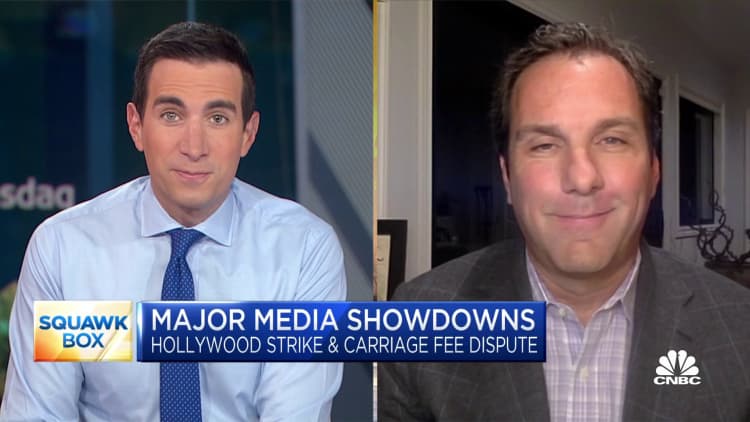The Hollywood industry has been grappling with the challenges of the streaming model for years. As writers and actors fight for better wages and streaming profits, many studios are finding that streaming is not yet a profitable venture. Streaming has disrupted the traditional economics of the media industry, but its long-term sustainability is still uncertain.
“The change in the economics of the North American media industry in the last five years has been breathtaking,” says Steven Schiffman, a professor at Georgetown University.
Legacy media companies, such as Disney, Warner Bros. Discovery, Paramount, and NBCUniversal, have struggled to compete with Netflix, which disrupted the industry with its original content. These companies invested in content libraries and created original shows to attract consumers.
However, the subscription-based streaming model is vastly different from the ad-revenue model of traditional TV. High licensing costs and low revenues per subscriber have caught up with studios, leading to a decline in subscriptions. This has forced media companies to shift their focus to other revenue-generating strategies.
Netflix, with its early entry into streaming, remains the only profitable streaming company. Other players in the industry are struggling to offset the decline in customers and make streaming financially viable.
The content arms race among media companies has further strained their budgets. The cost of producing shows and films has skyrocketed, with studios spending billions on new content to attract and retain subscribers. However, the correlation between high content spending and success is not always straightforward.
As the economics of the industry have changed, actors and writers have felt the impact. Streaming platforms often do not provide residual payments, leading to dissatisfaction among industry professionals.
In addition, the lack of transparency around streaming viewership data has contributed to contract disputes between studios and writers/actors. Studios are hesitant to share data and tie compensation to show popularity, which has caused tension in the industry.
Amid these challenges, media companies are revisiting old business models to make streaming profitable. They are incorporating advertising, licensing content to other platforms, cracking down on password sharing, and windowing content to different platforms. The pay TV bundle, despite cord-cutting trends, continues to generate revenue for companies.
Furthermore, companies like Disney and Netflix are exploring ad-supported offerings to boost subscriber growth and diversify revenue streams. Free ad-supported streaming services are also gaining popularity, providing additional ad revenue and licensing opportunities for media companies.
As the industry evolves, hybrid models that combine subscription fees and advertising are expected to emerge. The key for success will be providing value to consumers.
The Struggles of Hollywood Studios
Hollywood studios have been facing difficulties in adapting to the streaming model. The emergence of streaming platforms, like Netflix, has disrupted the traditional economics of the media industry. While the subscription-based streaming model has attracted consumers, it has not been profitable for many studios.
Legacy media companies, such as Disney, Warner Bros. Discovery, Paramount, and NBCUniversal, have struggled to compete with Netflix and its original content. These companies have invested heavily in content libraries and produced new shows and films to attract subscribers.
However, the subscription-based streaming model comes with high licensing costs and low revenues per subscriber. This has caught up with studios, resulting in a decline in subscriptions and financial challenges.
Netflix, which was an early entrant in the streaming space, remains the only profitable streaming company among the major players. Other studios are finding it difficult to offset the decline in customers and make streaming a viable business model.
The industry has also experienced a content arms race, with studios spending billions on new shows and films to attract and retain subscribers. However, the correlation between high content spending and success is not always clear.
Another challenge is the change in economics for actors and writers. Streaming platforms often do not offer residual payments, leading to dissatisfaction among industry professionals.
The Path to Profitability
To make streaming profitable, Hollywood studios are revisiting old business models and incorporating new strategies.
They are exploring advertising as a revenue stream and licensing content to other platforms for additional income. Tightening password sharing rules and windowing content to different platforms are also part of their efforts.
The pay TV bundle, despite cord-cutting trends, continues to generate revenue for companies, and some are bundling their streaming services with pay TV subscriptions.
Disney and Netflix, in particular, are embracing ad-supported offerings to drive subscriber growth and diversify revenues. Other media companies are also turning to free ad-supported streaming services.
Hybrid models that combine subscription fees and advertising are expected to emerge, providing consumers with different options and value.










